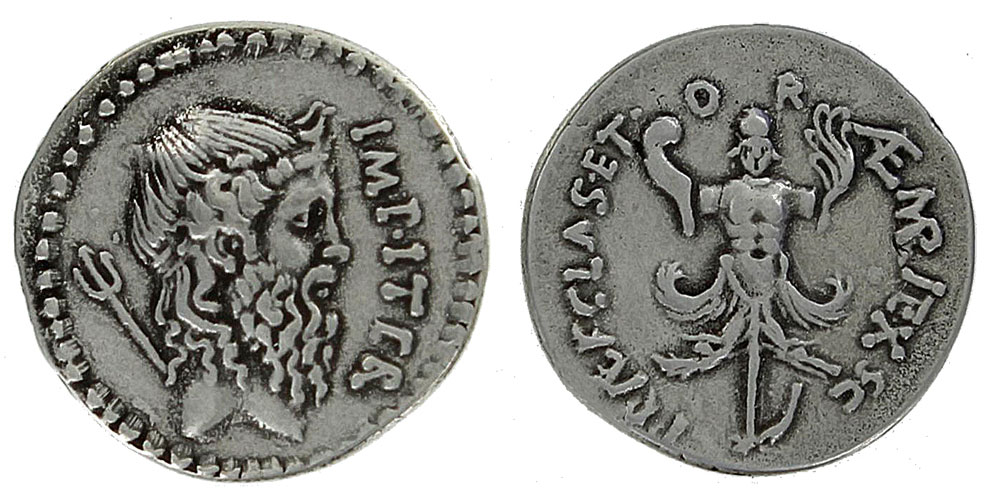Sextus Pompey Magnus: The Last Stand of the Roman Republic

Sextus Pompey Magnus, the younger son of Pompey the Great, was a prominent figure during the tumultuous final years of the Roman Republic. His naval prowess, strategic acumen, and tenacious resistance against the Second Triumvirate established him as a formidable opponent and a symbol of the last stand of the Roman Republic.
Early Life and Family Background
Born in 67 BCE, Sextus Pompey Magnus was the son of Pompey the Great, one of the most influential Roman generals, and Mucia Tertia, a woman from a distinguished Roman family. His older brother, Gnaeus Pompey, also followed in their father’s footsteps and became a military leader. Sextus’s upbringing was shaped by his father’s political and military career, which undoubtedly influenced his path later in life.
Sextus Pompey’s Role in the Roman Civil War
During the Roman Civil War between Julius Caesar and Pompey the Great, Sextus initially served under his father, gaining valuable experience as a soldier and commander. After the decisive Battle of Pharsalus in 48 BCE, where his father was defeated by Caesar, Sextus and his brother Gnaeus fled to Spain, they continued to resist Caesar’s forces, rallying support among local Roman communities and military veterans.
Sextus Pompey’s Rise to Power
Following Caesar’s assassination in 44 BCE, Sextus Pompey took advantage of the power vacuum to establish himself as a dominant force in the western Mediterranean. He assembled a formidable fleet and seized control of key coastal cities in Sicily, Sardinia, and Corsica. This allowed him to control the grain supply to Rome, which he used as a powerful bargaining chip in his negotiations with the Second Triumvirate, comprising Mark Antony, Octavian (later Augustus), and Lepidus.
The Treaty of Misenum and the Sicilian Revolt
In 39 BCE, Sextus Pompey and the Second Triumvirate signed the Treaty of Misenum, which recognized Sextus’ control of Sicily and granted him the title of “Prefect of the Sea.” In exchange, he agreed to allow the passage of grain shipments to Rome. However, the fragile peace was short-lived, as the Triumvirate soon violated the treaty, sparking the Sicilian Revolt.
The Battles of and Mylae Naulochus
In response to the Triumvirate’s treachery, Sextus Pompey waged a fierce naval campaign against them. In 36 BCE, he scored a significant victory at the Battle of Mylae (37 BC), defeating the combined fleets of Octavian and Lepidus. However, his luck would not last. Later that year, at the Battle of Naulochus, Sextus’ fleet was decisively defeated by the Triumvirate’s navy, led by Marcus Agrippa.
The Fall of Sextus Pompey Magnus
Sextus Pompey’s defeat at Naulochus marked the end of his influence and the beginning of his decline. He was forced to flee to Asia Minor, where he sought refuge with the local kings. However, his fortunes continued to dwindle, and in 35 BCE, he was captured by one of Mark Antony’s generals and executed without trial.
Original Coin is Rare.

Sextus Pompey Neptune Denarius Replica Coin available at coinreplicas.com
Original Similar Coin Sold for $6500 in a recent sale.

Catanaean Brothers Denarius Replica Coin, available at coinreplicas.com

